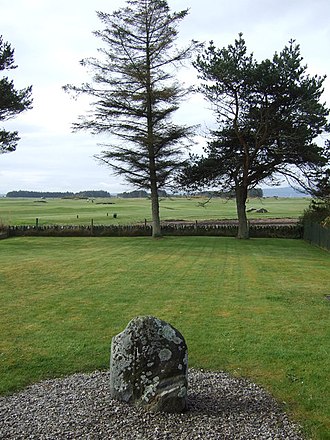Janet Horne is the name attributed to the last person to be executed for witchcraft in the British Isles, at Dornoch in Sutherland, Scotland in June 1727.[a]Some sources, probably incorrectly, say 1722.[1] The earliest sources do not record the woman’s name however, and the attribution only appears from 1920 onwards. Further complicating matters is that “Jenny Horne” was a generic name for witches in the north of Scotland at that time.[1]
Janet was an insane old woman who lived with her daughter in the parish of Loth, in Sutherlandshire. She was accused of bewitching pigs and poultry, and most heinously of transforming her daughter into a pony, and having her shod by the Devil, which it was claimed resulted in her daughter’s lameness. Janet was tried before the sheriff-depute, Captain David Ross of Little Dean, who exceeded his authority in judging the case, and so in the words of the historian W. N. Neill, Janet’s subsequent conviction and execution were “practically illegal”.[2]
As Janet was being taken to be burned alive, she was so unaware of the reality of her situation that, the morning being chilly, she warmed her hands at what she called “the bonnie fire” that was about to consume her.[2]
Witchcraft ceased to be a crime in the whole of Great Britain with the passage of the Witchcraft Act of 1735Sometimes dated 1736, an Act of Parliament that repealed the statutes concerning witchcraft throughout Great Britain, including Scotland., eight years after Janet’s execution.[3]
See also
- Catherine HayesCatherine Hayes née Hall (1690–1726), was the last woman in England to be executed by being burned alive. , the last woman in England to be executed by being burned alive, in 1726

